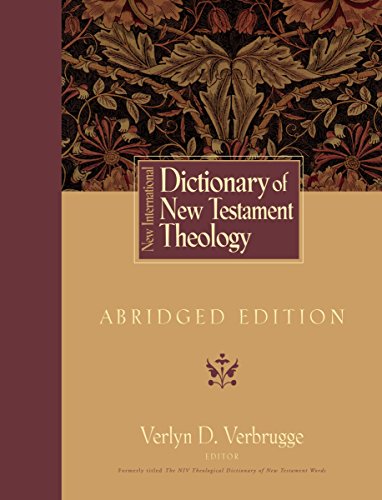A Book Review from Books At a Glance
By Jeremiah Kinney
Have you ever noticed how many lists are in 2 Timothy?
- “Not cowardice but power, love, and a sound mind.”
- “Flee youthful passions but follow after righteousness, faith, love, and peace”
- “Not quarrelsome but kind to all, able to teach, patiently enduring evil,
- “People will be lovers of self, lovers of money … ”
- “You have followed my teaching, conduct, aim in life…”
- “Breathed out by God, profitable for teaching, reproof, rebuke, and instruction in righteousness”
- “Preach the word, be instant in season and out of season, reprove, rebuke, exhort, with all long-suffering and teaching”
- “Be sober-minded, endure suffering, do the work of an evangelist, fulfill your ministry”
Preaching through any one of these lists calls the preacher in his study to lexical work. But preaching through all of these lists in a 2 Timothy sermon series draws out the definite need for definitions, and not just mere glosses, but nuances. More than nuances, given the context: Paul is writing a last note to his protege as he faces death for his ministry while expressing no regrets! He is reflecting back over decades while also considering a present problem his disciple faces, and so he is bringing to bear a lifetime of physical and written ministry, especially—for us the Bible readers—a written ministry. These lists then—how do they encapsulate deep shorthand between captain and lieutenant, and a shorthand to which we have access thanks to that written ministry?
I personally reject the Timothy-was-a-coward hypothesis. Paul and Timothy go way back, and Paul is rehearsing once and for all the profound and marvelous truths of a challenging but enriching way to spend one’s life. Reading this letter is like watching a final embrace.
All of this surfaces the question (it doesn’t “beg the question,” that’s a different thing): what resource allows us to unpack these words, but not exhaustingly because, well, there are how many of these lists? And how many other things do I have to do today?
The resource you’re looking for is the New International Dictionary of New Testament Theology Abridged Edition, edited by Verlyn Verbrugge, or, the NIDNTT Abridged, or, as I call it in my stream of consciousness as I turn to the right bookcase, The Verlyn. The Verlyn is the abbreviation (and complete revamping, according to the introduction) of the Colin Brown four-volume set with the same acronym. Dr. Verbrugge has turned Brown’s work into a single volume you can put in your backpack and take to Starbucks with your Greek Bible and your Monday sermon journal. The words are listed in alphabetical order, in Greek, and written in Greek letters (not English words, as in the original Colin Brown set).
When you look up δικαιοσυνη, for example, you can read all about righteousness in Classical Greek writings (this part receiving a serious abridgment from the Brown text), in the LXX and intertestamental writings, then in the synoptics, then in John’s writings, then in Paul, then in Hebrews, then in James, then in Peter. The full range of meaning comes home. The cross references abound. The options for what Paul was intending to say to Timothy line up for full-dress inspection, and you can work through a four-page article (but the book is wide and tall, so think more like 6-8 pages) in order to consider what it is you want to tell your congregation that Paul was telling Timothy about pursuing righteousness rather than youthful pride.
How is it “theological” per se? The articles abound with both data and commentary, links between biblical authors and between testaments, harmonies and contrasts, giving verse citations. Various interpretations are noted. Dots are connected. Conclusions are drawn. Only at the very end of the article are roots with glosses given (along with Goodrick-Kohlenberger numbers). Instead of thinking of δικαιοσύνη in terms of a gloss, the reader is invited to think of it semiotically, as a shorthand label for a deep conceptual well.
The Verlyn, or the NIDNTT Abridged, completed in 2000, is the book you want for 2 Timothy. It is ideal too for those sermons that deeply cover just a verse or two or that range across the Scriptures on a single theological topic. Think: relevant, doctrinal sermons. And, without a working knowledge of koine Greek, a preacher or student can still use the book, coordinating it with an interlinear Greek-English Bible, and referencing the order of the Greek alphabet to find the right word.
One side note: In 2014, Zondervan published Moises Silva’s revision/update to Brown’s four volumes. It is now called the New International Dictionary of New Testament Theology and Exegesis. And it is now five volumes. Some of Verbrugge’s editorial choices are carried over, like listing the entries in Greek, but no Verbrugge-style single volume abridgment appears to be available.
Dr. Verlyn Verbrugge was an editor and pastor who passed away on Father’s Day in 2015. He left behind a treasure, a θεσαυρός, for our Monday lexical dives. Sell what you have and buy the field this book is buried in.
Jeremiah Kinney (M.Div.) is a church planter and pastor of Remedy City Church in Muncie, IN.
